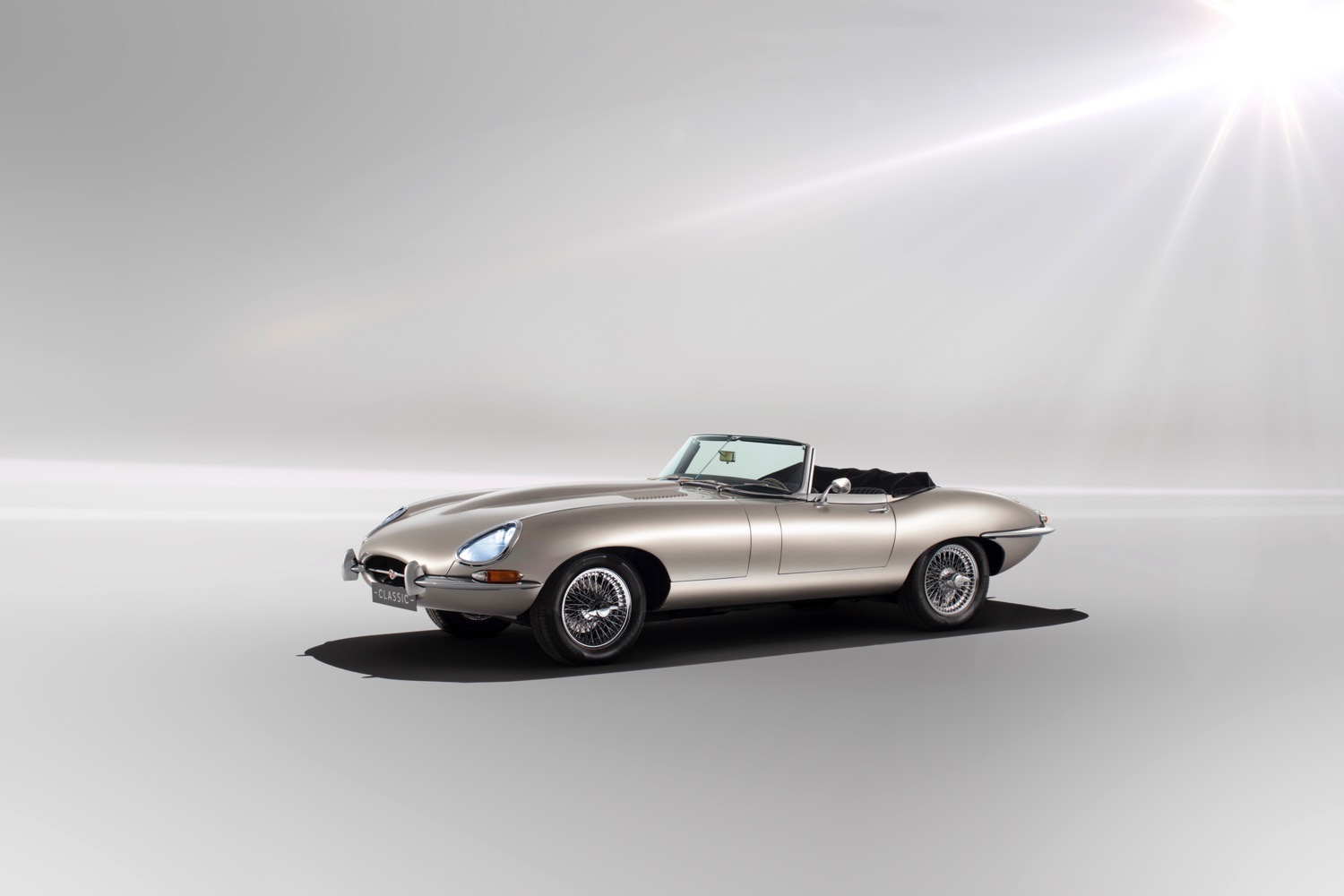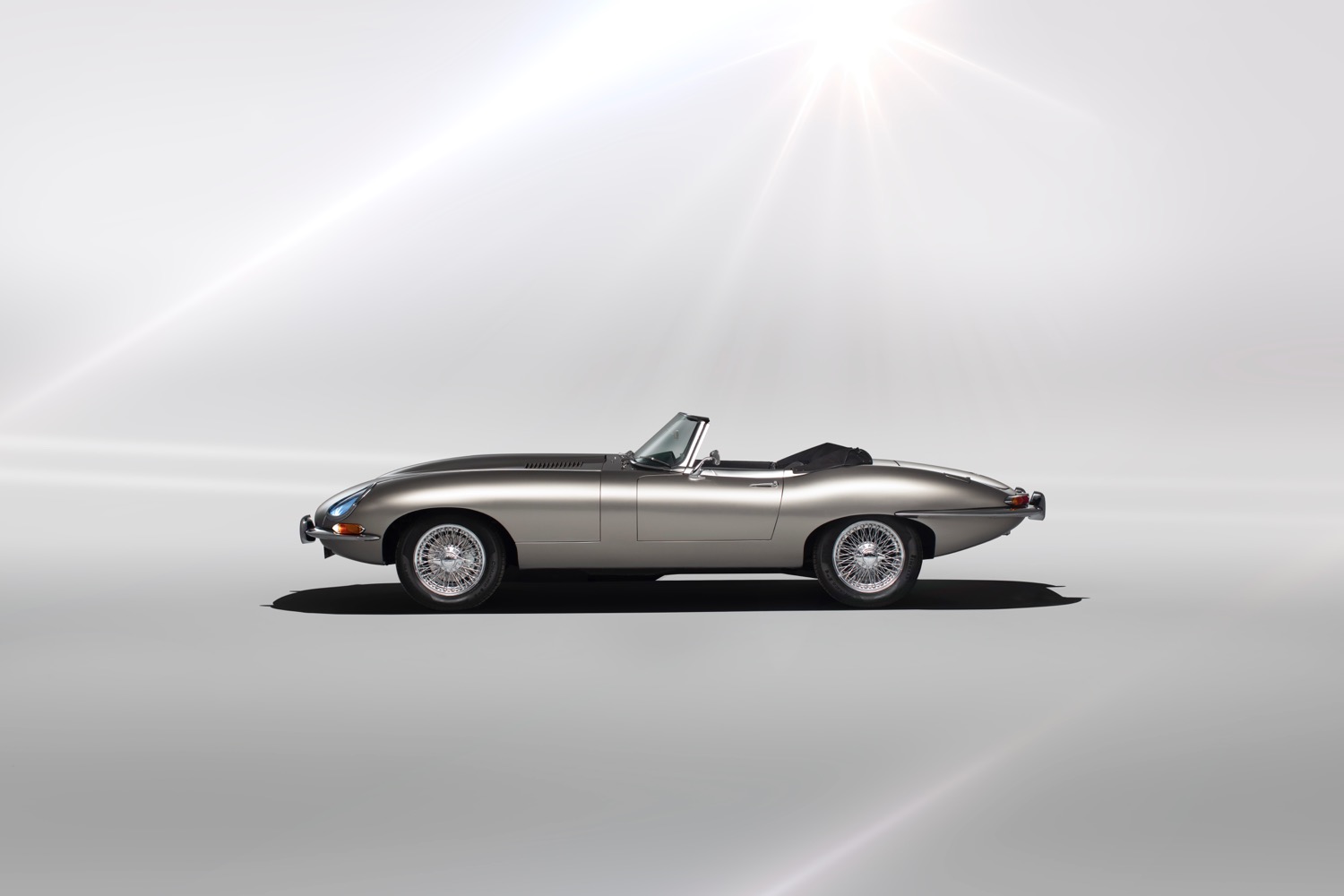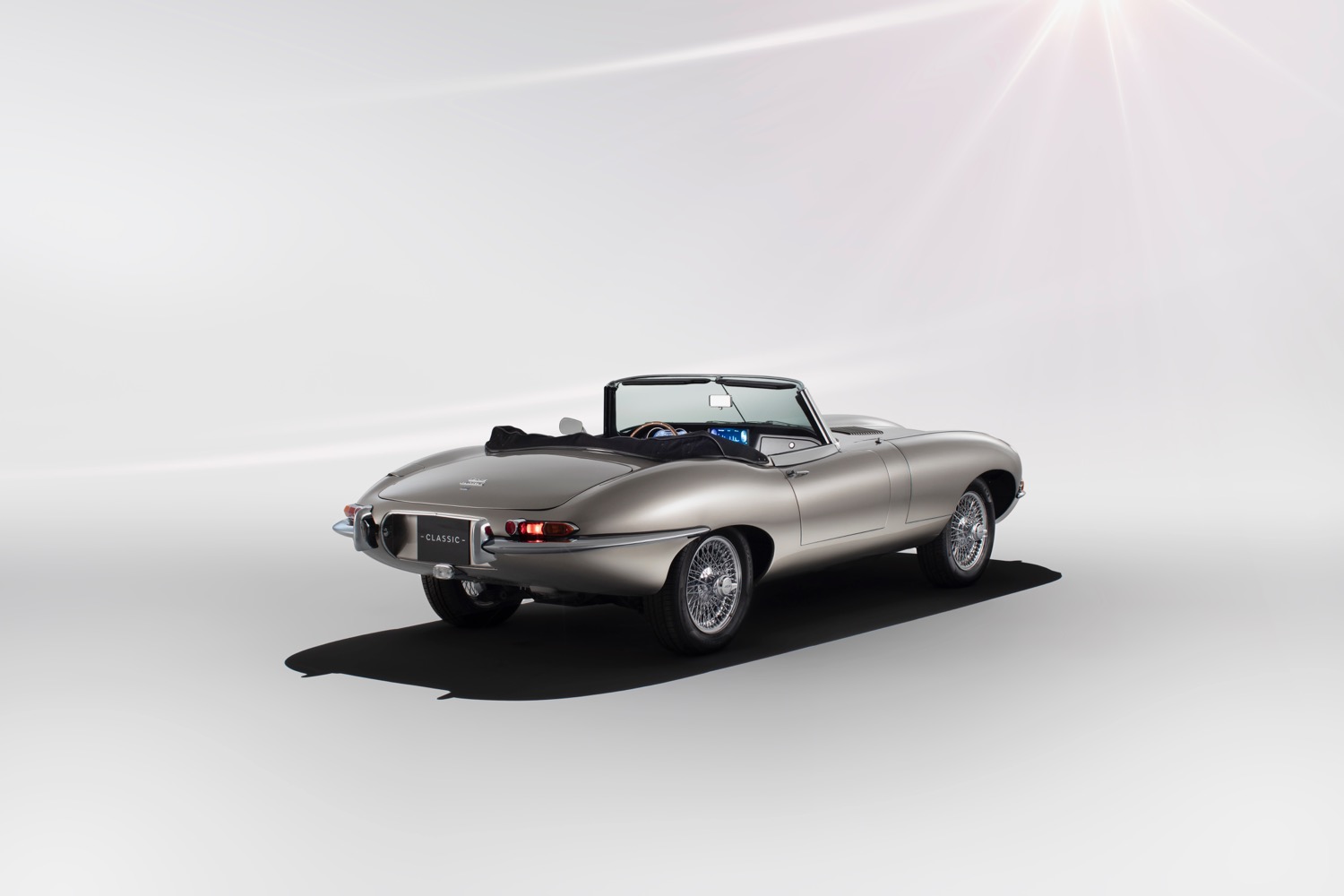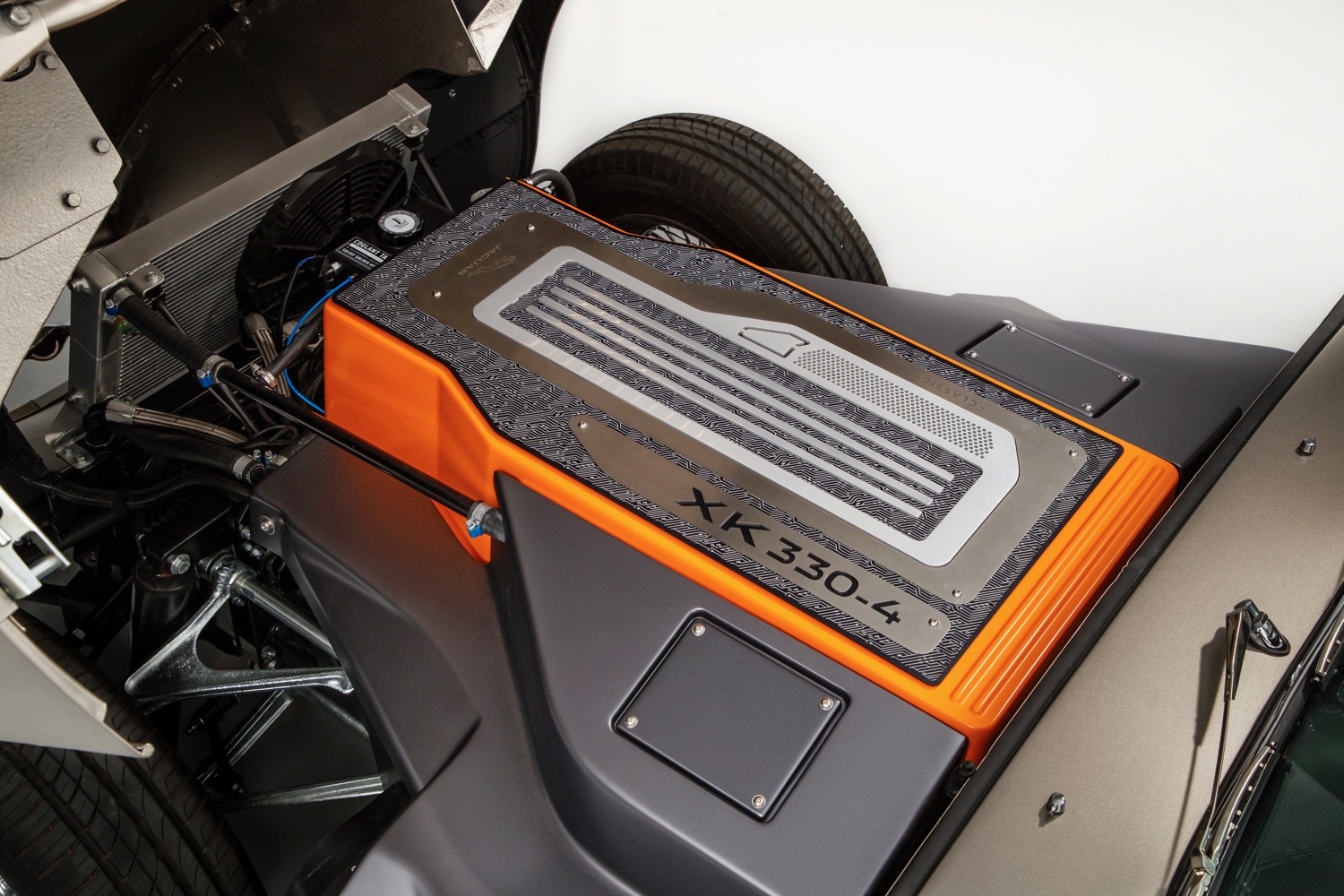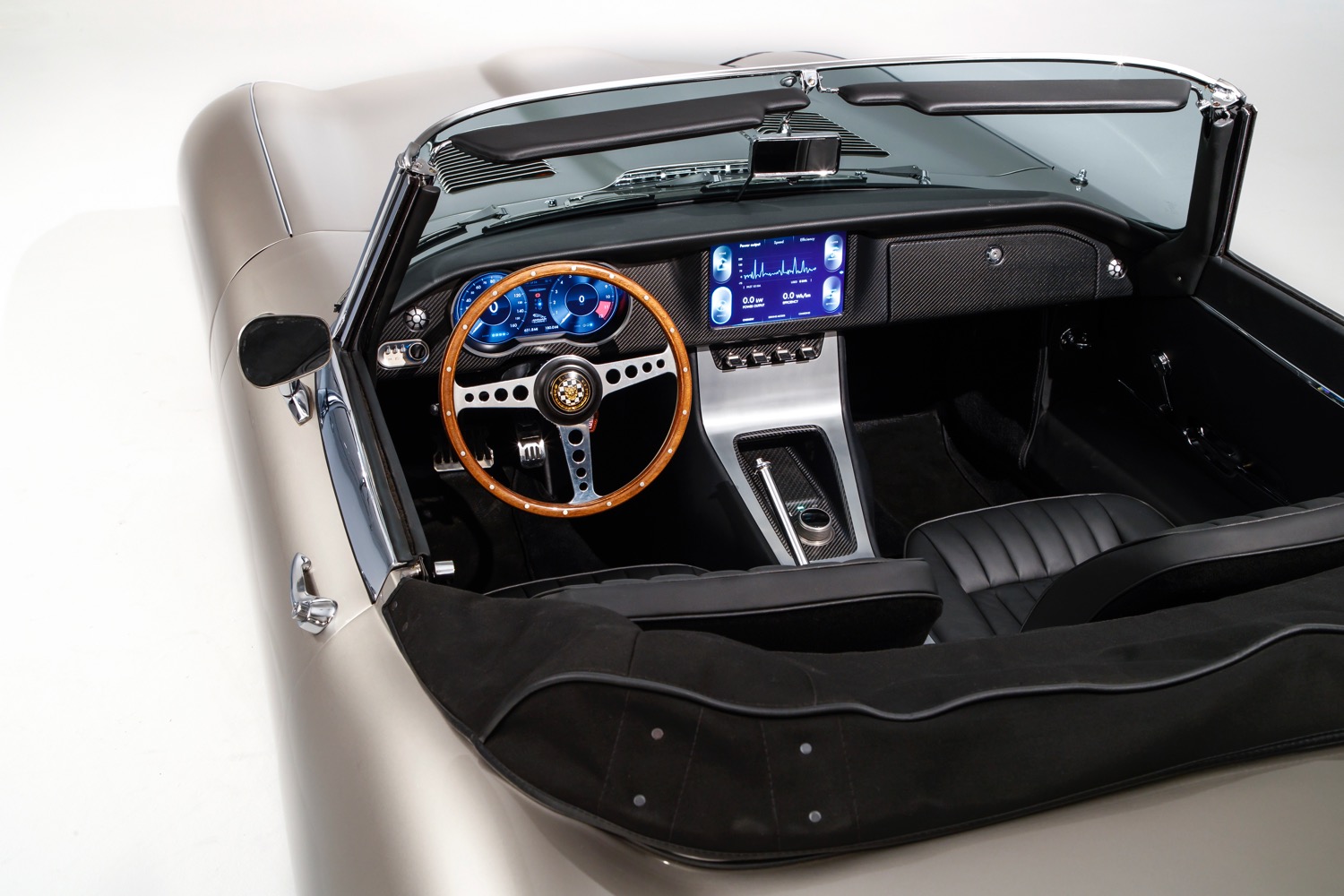In 2017, Jaguar got everyone talking when it unveiled the E-Type Zero concept, a classic sports car with a modern electric powertrain. The car got even more exposure when it showed up at the Royal Wedding. Now, Jaguar says it will build a limited run of production models, with deliveries set to begin in 2020. Cue jokes about old British cars and their notoriously shoddy electrical systems.
The original E-Type Zero was a one-off prototype based on a 1968 Series 1.5 E-Type Roadster. To mark the production announcement, Jaguar will display an updated version at The Quail: A Motorsports Gathering, one of the many events that comprise Monterey Car Week.
Jaguar hasn’t finalized specifications for the production model, but the concept uses a 220-kilowatt (295-horsepower) electric motor mounted where the transmission would normally go. A new prop shaft allows the motor to mate with the stock E-Type rear differential. A 40-kilowatt-hour lithium-ion battery pack sits under the hood. Jaguar claims it has the same dimensions, and similar weight, to the inline-six engine that previously resided there.
The E-Type Zero concept can achieve 170 miles of range, according to Jaguar. That is more than a current-generation Nissan Leaf. Recharging takes six to seven hours. Jaguar previously said the E-Type Zero could do 0 to 62 mph in 5.5 seconds, which the automaker claimed as 1 second quicker than the stock, gasoline-powered version.
Purists may question the idea of modifying a classic car in this way, but it makes perfect sense for Jaguar. The E-Type Zero was developed using components from the British automaker’s I-Pace electric crossover (Jaguar also got some help from Croatian supercar maker Rimac). At the same time, converting E-Types to electric power makes good use of Jaguar’s Classic Works restoration division, which has already worked its magic on the E-Type in the form of meticulous restorations of original cars and recreation of the famous Lightweight E-Type race car.
Jaguar won’t discuss pricing, but it is taking reservations from E-Type owners looking to have their cars converted to electric power. The electric conversions will be fully reversible “to preserve the authenticity of the base vehicle,” a Jaguar statement said. More importantly for collectors, that helps preserve value should the owner decide to sell. The automotive industry may be moving toward an electric future, but collectors will always value originality above all else.
